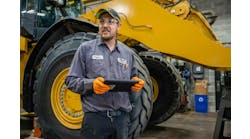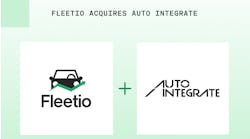The year was 1969. Richard Nixon was president. Neil Armstrong walked on the moon. The Woodstock music festival took place. It was also the year VMRS (Vehicle Maintenance Reporting Standards) was developed.
More than 40 years ago, a few forward thinking folks got together to develop a better way to communicate and report maintenance information. Little did they expect that VMRS would still be in use today and would become an integral part of equipment maintenance operations.
VMRS was developed to establish a standard coding convention for universally tracking equipment and maintenance costs and functions. In other words, it was intended to be the shorthand of maintenance reporting.
The purpose of VMRS has been to provide a vital communication link between maintenance personnel, computers and management. It puts everyone on the same page and speaking the same language.
The VMRS codes help eliminate the need for extensive written communications with all the inherent problems of miscommunication normally associated with the written word.
VMRS has expanded over the years from primarily fleet use to now include OEMs, parts manufacturers and suppliers. The coding structure encompasses most equipment found within today’s transportation activities, including trucks, tractors, trailers, forklifts, shop equipment, off-road vehicles and utility vehicles.
If it needs maintenance, VMRS can help.
CODING STRUCTURE
VMRS contains codes for developing the equipment birth certificate, labor operations and warranty repairs, as well as recording part usage. These codes provide a sound basis for budget preparation and forecasting based on fleet mix, projected utilization and historic performance.
VMRS helps control costs by providing detailed records of where monies were spent, at which point in the life of a piece of equipment repairs were performed and details the expenses incurred in the supporting activity. Simply put, VMRS codes will show you the maintenance money.
PM PERFORMANCE
VMRS also helps an organization in determining the effectiveness of its PM program.
Are PMs being performed too often or not often enough? Should PM intervals be modified based on specific failures reported through maintenance reporting and not on anecdotal information? What staffing is required to perform PMs? VMRS provides the answers.
The codes for PMs are found in Code Key 15: Work Accomplished, along with more than 40 defined codes used to describe the work performed or completed by technicians.
Any size fleet can benefit by implementing the VMRS codes into their daily maintenance routine. VMRS codes help track labor distribution covering both direct and indirect labor.
VMRS provides complete details as to parts use, and identifies which part should be inventoried and which should be procured on an as-needed basis.
These are just a few of the benefits using VMRS brings to equipment repairs and maintenance.
TO BEGIN
There are several ways a fleet can get started using VMRS. First and foremost is to contact the staff at the Technology & Maintenance Council (TMC) to discuss your maintenance needs, as this will make the implementation go much smoother.
Many people have preconceived notions about VMRS. A discussion with the TMC staff will help dispel any wrong ideas.
VMRS is licensed exclusively by the TMC of the American Trucking Associations, the largest national trade association for the trucking industry. There are currently three types of license agreements: Single User, Enterprise and Developer.
- The Single User is for the casual user for use on a single computer workstation. The materials may not be used by more than one user on a computer network.
- The Enterprise License is for use by multiple users within the enterprise. The user may place the materials on a computer network within the workplace.
- The Developer License is intended for use solely as part of another product, such as part of maintenance software.
FLEET INTEGRATION
Maintenance software became an integral part of the fleet world in the late 1990s and VMRS was the perfect fit. The VMRS codes enabled software firms to enhance their products with a ready-made maintenance language.
The codes were readily accepted by fleet users and became an important part of their daily maintenance routine. VMRS was a seamless inclusion for maintenance software. In fact, many fleets are using software and not realizing they are using VMRS.
VMRS continues to expand and reflect the many changes in today’s rapidly changing technology. There are now codes for hybrid drivetrains, selective catalytic reduction, lane departure systems and crash avoidance systems, to name a few.
Many non-traditional fleets are now finding the importance of using VMRS as well. Municipalities, utility companies and construction fleets have started using VMRS to track their maintenance costs.
With tougher economic times it’s important to know where the maintenance dollars are being spent and VMRS offers the best method for gathering the pertinent reports.
CURRENT CONTENT
Reports are the backbone for any maintenance shop and VMRS is the best method available for gathering numerous types of reports. VMRS can help any fleet with parts reliability data and costs, labor data, warranty claims and much more.
The number of codes has increased over the years, but the standard VMRS format remains the same. VMRS continues to be the preferred method for maintenance reporting and communication.
New VMRS codes are entered on a continual basis and become part of the standard coding convention. New codes can be requested by contacting the staff at TMC, and TMC encourages new code requests in order to keep VMRS up-to-date and relevant.
A lot has happened since 1969, but VMRS has stood the test of time and is still going strong.
To find out more about VMRS contact Jack Poster by phone at 703-838-7928 or by e-mail at [email protected].



